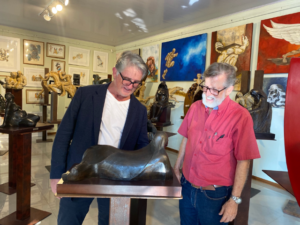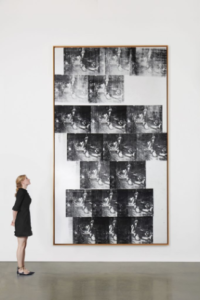Getting married is a seriously happy and happily serious social ritual.
The serious stuff is expressed in the observations and advice of the officiant, as well as the promises made by the bride and groom. The happy stuff is expressed at the reception afterwards, in speeches and song and dance.
I’m not sure why it is, but I’ve been to a lot of ethnic American weddings. Irish American weddings. Italian American weddings. Jewish American weddings, Lebanese American weddings. Polish American weddings. The list goes on.
I’ve also been to weddings in France and England and Italy and Spain. And I’ve been an interested onlooker at weddings in China, India, Thailand, and Japan. My favorites are those that tilt the happiness/serious ratio towards happiness.
One of my all-time favorite weddings was a two-day event that took place in Chad, Africa, in 1976. (I was there as a Peace Corps volunteer, teaching English literature at the University of Chad.) It was the wedding of Arosi, a Chadian friend of mine. He was from northern Chad, and a member of a tribe whose culture was a medley of Arab and animist beliefs.
On day one, we, Arosi’s best men, ritually invaded the home of the bride and, in front of her family and friends, we… well, we kidnapped her! We carried her out of the house, put her in the back seat of the pickup truck we had come in, and took her to Arosi’s house. Minutes after we got there, a troop of her friends broke into his house, rescued the bride, and returned her to her house. We went to a bar.
The marriage ceremony took place the following afternoon. I arrived a few minutes late. The guests were already gathered, drinking and chatting, just like what you would expect at an American wedding. Arosi was there. But not his bride. I wondered why.
I didn’t have to wonder long. All of a sudden, there was a drumming, and the crowd hushed. The bride, dressed in a floor-length white gown, with a white veil covering her head, was led into the room by her bridesmaids.
For a long moment, the place was silent. The bride stood there, her head tilted backwards, her body statue-still. The musicians began to play a languid, Middle Eastern sounding tune, and then everyone was shouting at Arosi. It was half in Arabic and half in his native tongue. I didn’t understand a word, but I intuited the intention. They were playfully urging him to do something.
Arosi stood there, smiling and shaking his head. The more he shook his head, the louder they shouted. Finally, he gave in, approached his bride, and stood in front of her. He lifted the veil from her head. And the music stopped.
It took my breath away. There she was, this stunningly beautiful, ebony-skinned woman in a white gown, adorned from head to toe with gold jewelry.
The music began again, and the bride began to dance. Slowly and then with more energy. She was moving almost erotically to the music. No, not “almost.” It was very erotic. And powerful. A visual battle between an idealization of feminine beauty and the power of feminine sexuality.
I’d never seen anything like it. I was half shocked and half embarrassed.
Arosi put the veil back on her head. She stopped dancing and resumed her frozen pose. The music stopped, too.
It was very dramatic. And I was disappointed. I felt like something I very much needed had suddenly been taken away from me. Like watching a great boxing match and having the lights go out at a pivotal moment.
Once again, the crowd shouted encouragement to Arosi. And, once again, he shook his head, smiling. Finally, he relented and lifted the veil. And, again, his beautiful wife began to move, gradually resuming her seductive dance.
This ritual was repeated perhaps a half-dozen times. Then the crowd joined the dance, and the party began.
I went to several other African weddings during the two years I lived in Chad, and I’ve been to one here in the States. And they all had elements of what made Arosi’s so special, and the most memorable wedding I’ve ever been to: the celebration of feminine beauty and power, expressed though this interesting combination of Black African and Arabic music and dancing.
Oh, wait! I can’t believe I just said that this was the most memorable wedding I’ve ever been to. There was one – and it was in Africa, too – that was more memorable. It was my own wedding to K – about a week after she came to join me in Chad. Click here to read that story.

 MarkFord
MarkFord


